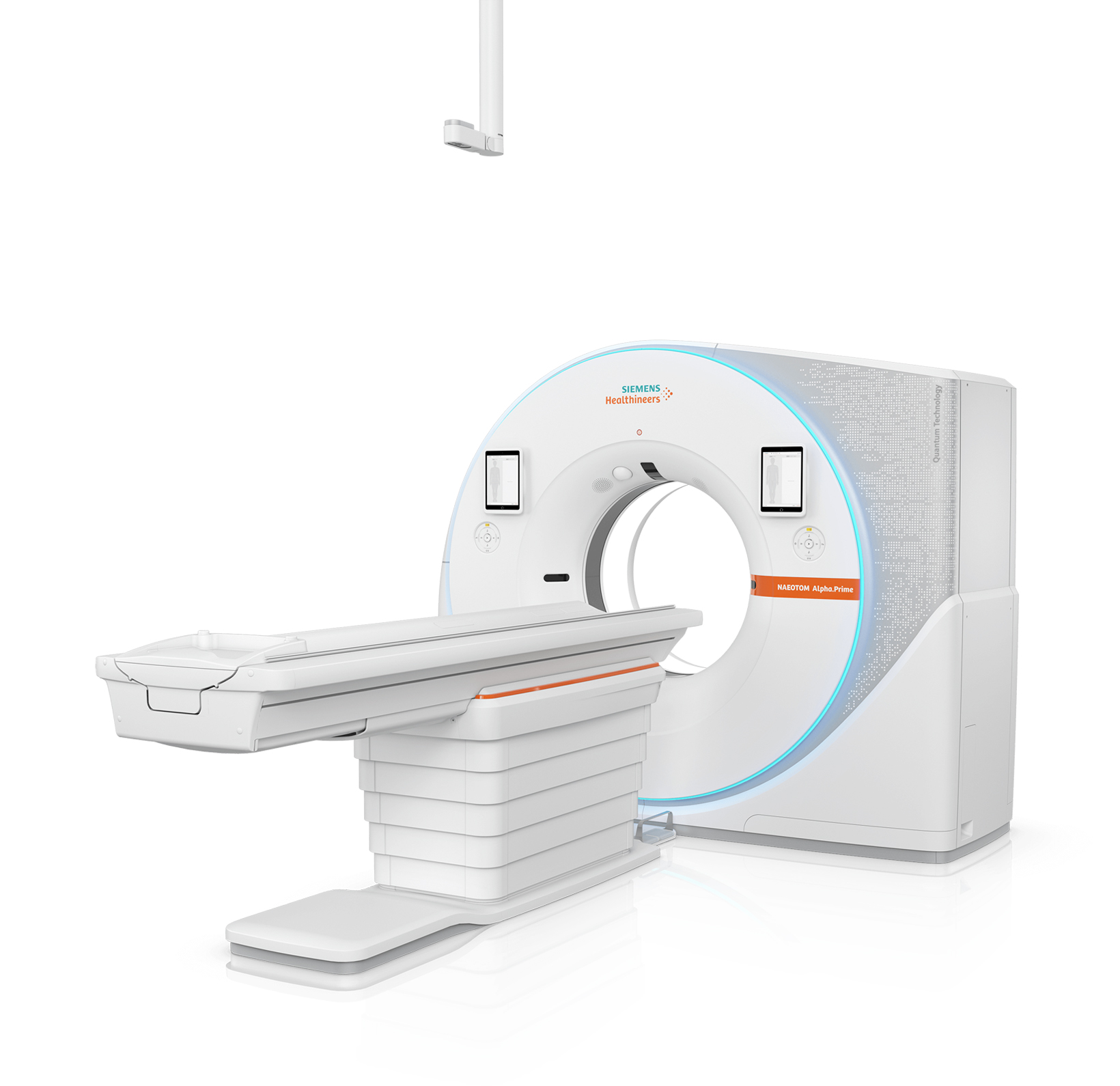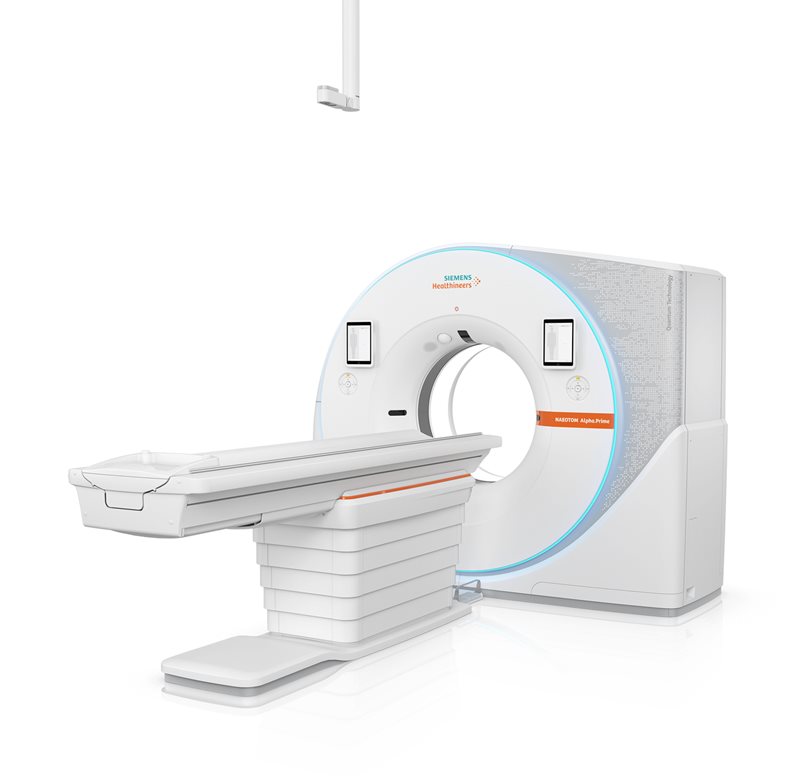Siemens Healthineers Debuts Dual- and Single-Source Photon-Counting CT Scanners, Enabling Precision, Speed, and Wider Access
Images

Since Siemens Healthineers released the world's first photon-counting computed tomography (CT) scanner the Naeotom Alpha at RSNA 2021, the technology has had a significant impact in clinical practice. At RSNA 2024, the next generation of photon-counting CTs will fundamentally change care pathways in a number of areas, according to Matthew Dedman, Head of Computed Tomography at Siemens Healthineers North America.
“The profound clinical impact that we’ve observed … has solidified our vision: the future of CT is a photon-counting future. I view it as our responsibility to make this technology accessible to as many patients as possible,” Dedman says, considering the cost of ownership perspective.
 The second dual-source scanner, Naeotom Alpha.Pro, and the world’s first single-source scanner with photon-counting technology, Naeotom Alpha.Prime, were released on Sunday, Dec. 1, to attendees in South Hall booth 2529, extending photon-counting technology further across the Siemens Healthineers portfolio. The 510K-pending technology acquires detailed images with anatomical and functional information at lower radiation doses, enabling precise imaging of small targets with fewer artifacts, facilitating smoother workflows and faster decision-making.
The second dual-source scanner, Naeotom Alpha.Pro, and the world’s first single-source scanner with photon-counting technology, Naeotom Alpha.Prime, were released on Sunday, Dec. 1, to attendees in South Hall booth 2529, extending photon-counting technology further across the Siemens Healthineers portfolio. The 510K-pending technology acquires detailed images with anatomical and functional information at lower radiation doses, enabling precise imaging of small targets with fewer artifacts, facilitating smoother workflows and faster decision-making.
“The Alpha.Pro provides the speed and temporal resolution that is an ideal system for facilities with high volumes, those with cardiovascular imaging needs, or for pediatric institutions,” explains Deadman, noting a scan time as fast as 491 mm/sec. The single-source configuration in Alpha.Prime works well as a centrally located high-performance scanner for complex cases at the core of “hub-and-spoke networks,” optimal for environments seeing neurology, thoracic, and abdominal cases, including emergency settings, he says.
In addition to unveiling the Naeotom Alpha.Pro and Naeotom Alpha.Prime at RSNA 2024, Siemens Healthineers rechristened its premium Naeotom Alpha photon-counting CT scanner as the Naeotom Alpha.Peak. Together, these three scanners form the Naeotom Alpha class.
Applications of photon-counting CT
Nowhere is photon-counting CT more impactful than in the expanding cardiovascular imaging space, largely due to its high spatial resolution and resultant image quality.
“With [the latest] photon-counting CT, we’re able to do things we’ve never done before,” says Dedman, like getting an accurate understanding and picture of the extent of coronary artery disease (CAD).
“We enable healthcare providers to triage CAD patients more effectively, as well as being able to visualize within stents to understand if there is any re-stenosis within the stent itself. This would have been very challenging to do with prior generations of technology.”
The technology is also used in pulmonology in the classification of interstitial lung diseases, evaluation of neurovascular conditions, as well as to understand the complexities of cancers in the pancreas, kidney, and liver.
Cardiac CT market changes
The volume of cardiac CT procedures in the U.S. grew substantially after the American Heart Association (AHA) 2021 guidelines changed to give cardiac CT angiography (CCTA) its highest recommendation as a frontline test to evaluate patients with stable and acute chest pain who have no history of CAD. Additionally, just last month, CMS announced a reclassification of cardiac CPT codes that will more than double reimbursement for these procedures in hospital outpatient settings to encourage broader use in facilitating better patient outcomes.
“Because of the proven clinical efficacy, the care guidelines, and now the more appropriate reimbursements in place, cardiac CT procedures are only going to increase,” Dedman told Applied Radiology, explaining that Siemens Healthineers “saw this reality coming,” and “took a leap” to bring the Somatom Pro.Pulse to market in 2023, a cost-effective alternative to traditional dual-source CTs for outpatient imaging centers.
“We invested in this platform before all these pieces were in place … but now that they are, this is a piece of technology that’s really going to assist health systems in expanding their ability to offer cardiac CT services at more locations within their health system,” beyond the walls of the main hospital to outpatient/ambulatory environments, Dedman says, with the same quality but alternative cost structures and installation requirements available. The Somatom Pro.Pulse uses an AI-powered intelligent user interface that combines patient data and heart rate or breath-hold capabilities to tailor patient-specific scan protocols, and uses advanced scanning technology for precise, consistent positioning.
Future outlook
Siemens Healthineers continues to follow leading research on photon-counting CT and cardiac CT, and plans to continue “expanding our fleet of photon-counting CTs to make the clinical value that’s been published hundreds of times now accessible to more patients,” Dedman says.
As hospitals and outpatient imaging centers look to determine the optimal strategy for providing non-invasive diagnostic tools in cardiac care, Siemens Healthineers will support their efforts to bring high-quality equipment and software in various configurations and price points to meet provider and patient needs.
Citation
Siemens Healthineers Debuts Dual- and Single-Source Photon-Counting CT Scanners, Enabling Precision, Speed, and Wider Access. Appl Radiol.
November 25, 2024